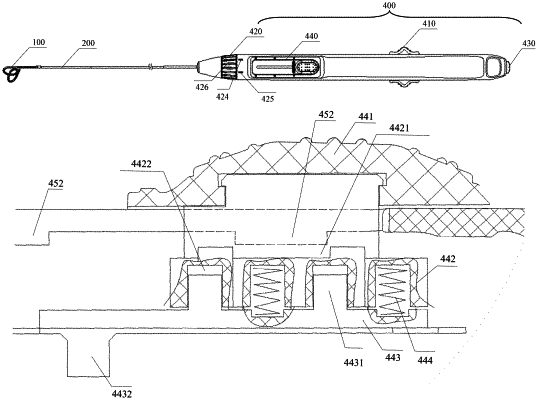| CPC A61F 2/9517 (2020.05) [A61B 17/00234 (2013.01); A61B 17/12145 (2013.01); A61B 1/018 (2013.01); A61B 1/2676 (2013.01); A61B 2017/00323 (2013.01); A61B 2017/00367 (2013.01); A61B 2017/00592 (2013.01); A61B 2017/12054 (2013.01); A61F 2002/043 (2013.01); A61F 2002/9511 (2013.01)] | 11 Claims |

|
1. A conveyor for an implant having at least one cavity, comprising:
a conveying handle, a conveying cable and a core wire, the conveying cable being a tubular body, a proximal end of the core wire connected to the conveying handle, and a distal end of the core wire penetrating through a distal end of the conveying cable from a proximal end of the conveying cable, wherein a first control is provided on the conveying handle, and when the implant is connected to the distal end of the conveying cable, the first control controls the distal end of the core wire to extend into the implant to straighten the implant of a preset shape, or the first control controls the core wire to withdraw from the implant to restore the implant to the preset shape;
wherein the first control comprises a first key and a guide rail, and the first key is sleeved outside the guide rail and is slidable along an axial direction of the guide rail, and the proximal end of the core wire is connected to the first key; and
wherein a portion of the first key in contact with the guide rail is provided with a ball member, and a plurality of first protrusions are provided at intervals along an axial direction of the guide rail on at least a surface of the guide rail in contact with the first key, and the ball member cooperates with the first protrusions to make a sound when the first key slides along the guide rail.
|